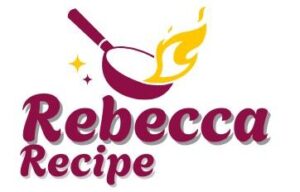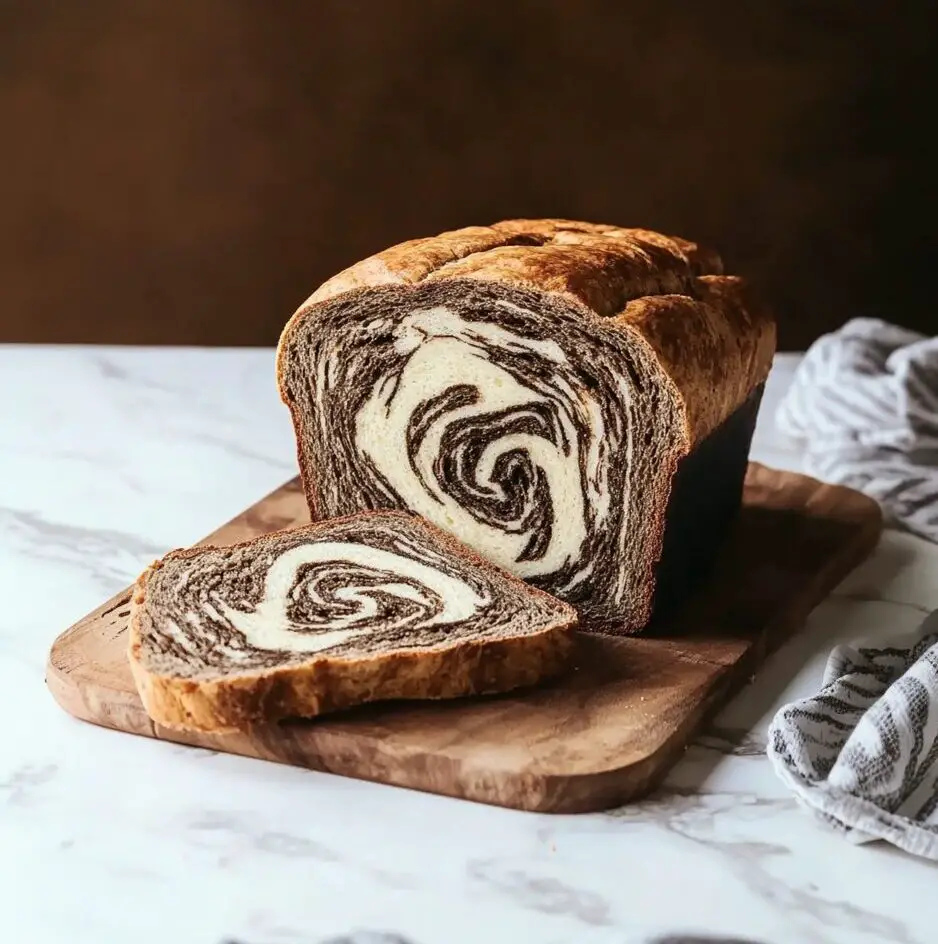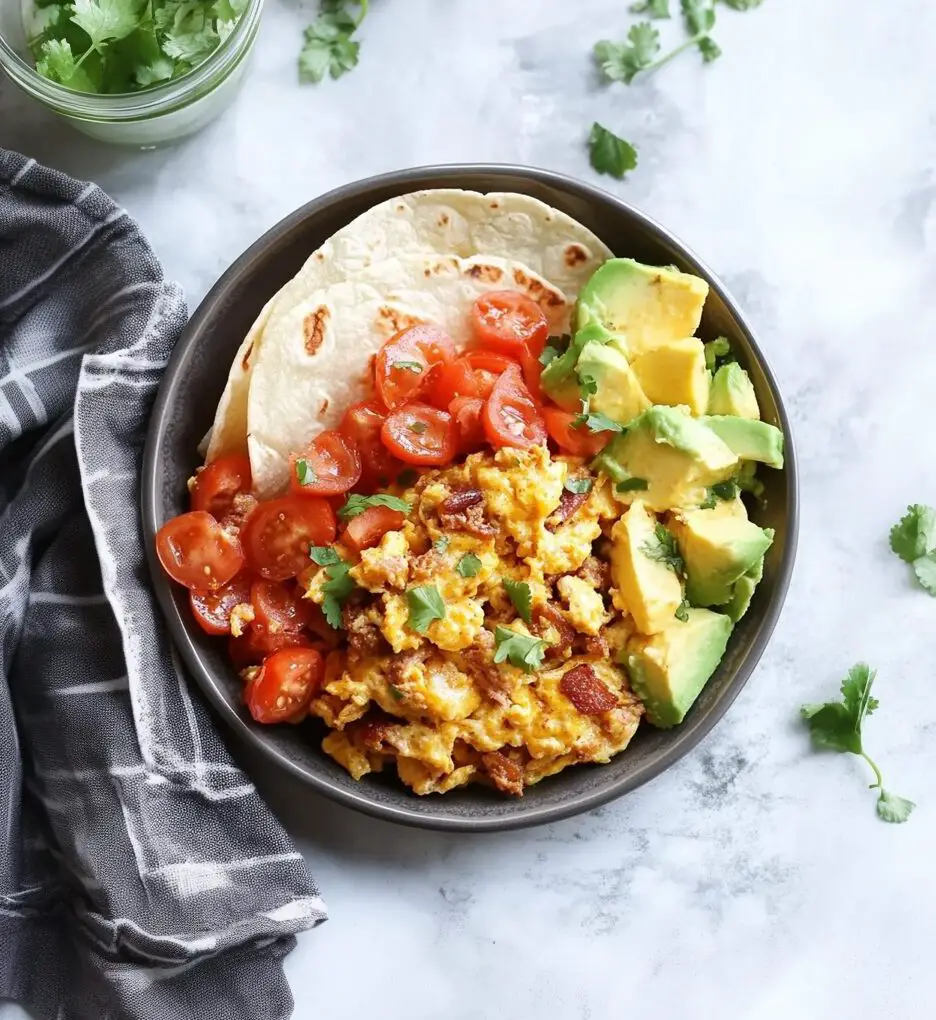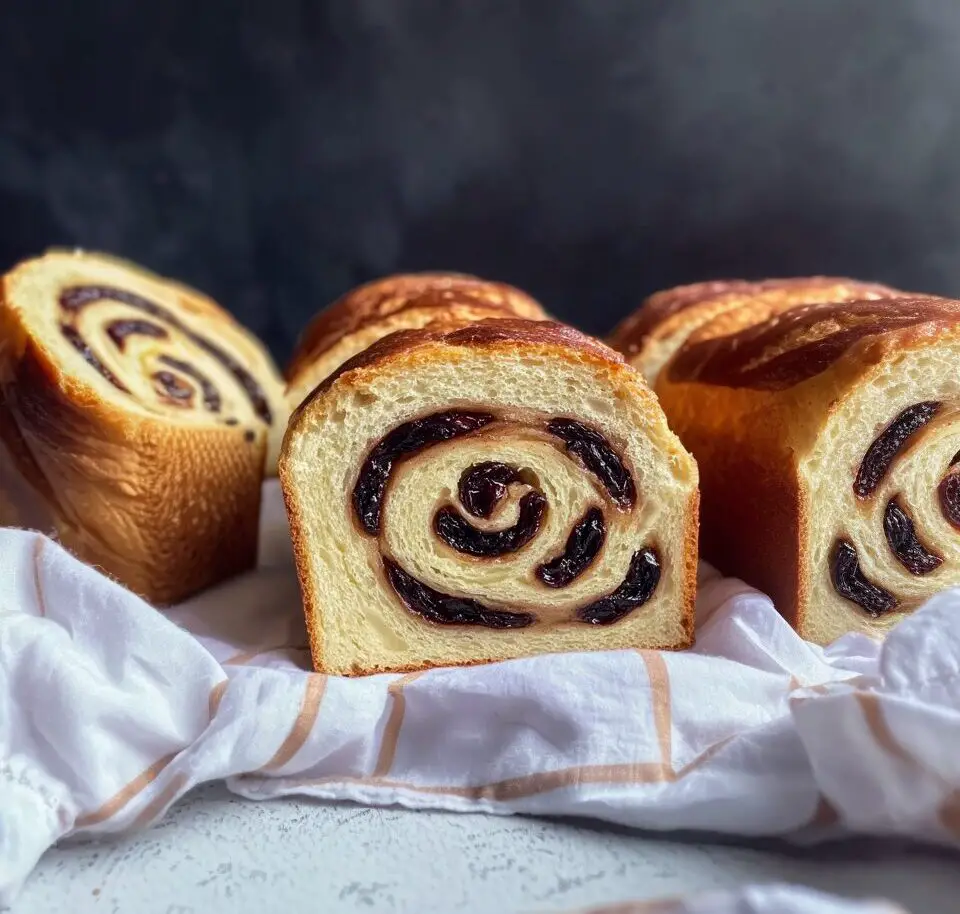Marbled Rye Bread is a visually striking and flavorful loaf that combines light and dark rye doughs to create a beautiful swirl pattern. This bread is perfect for deli-style sandwiches, especially the classic Reuben, or simply enjoyed with a smear of butter. The combination of rye flours, molasses, and optional caraway seeds imparts a rich, slightly tangy flavor, while the marbling technique adds an artisanal touch to your baking repertoire.
Full Recipe:
Ingredients
Light Rye Dough:
- 1½ cups (6 ounces) white rye flour
- 3 cups (13.5 ounces) unbleached bread flour
- 1½ teaspoons salt
- 1¾ teaspoons instant yeast
- 1½ teaspoons caraway seeds (optional)
- 1 tablespoon molasses
- 2 tablespoons softened butter (or shortening)
- Approximately 1¼ cups plus 2 tablespoons water (room temperature)
Dark Rye Dough:
- Same ingredients as Light Rye Dough, with the addition of:
- 1 tablespoon liquid caramel coloring
- or 2 tablespoons cocoa powder (or carob or coffee powder) dissolved in 2 tablespoons water
Directions
For Each Dough:
- In a large mixing bowl, combine flours, salt, yeast, and caraway seeds (if using).
- Add molasses, softened butter, and water. Mix until the ingredients come together to form a ball, about 1 minute. If the dough feels too dry, add the additional 2 tablespoons of water.
- Knead the dough on a lightly floured surface for 4–6 minutes until smooth and elastic.
- Place the dough in a lightly oiled bowl, cover, and let it rise in a warm place until doubled in size, about 1 hour.
Marbling and Baking:
- After both doughs have risen, punch them down and divide each in half.
- Roll out each piece into rectangles of equal size.
- Layer one light and one dark rectangle together, then roll them up tightly to form a loaf. Repeat with the remaining dough.
- Place the loaves into greased loaf pans, cover, and let them rise until nearly doubled, about 45 minutes.
- Preheat the oven to 375°F (190°C).
- Bake the loaves for 35–40 minutes, or until they sound hollow when tapped on the bottom.
- Remove from pans and cool on wire racks before slicing.
Nutrients (Estimated per slice, based on 24 slices total)
- Calories: 160 kcal
- Carbohydrates: 30 g
- Protein: 4 g
- Fat: 3 g
- Saturated Fat: 1 g
- Sodium: 200 mg
- Fiber: 2 g
- Sugar: 2 g
The History and Origins of Rye Bread
Rye bread has a deep-rooted history in many cultures, particularly in Europe, where rye flour was traditionally more accessible than wheat flour. Rye has been cultivated for thousands of years, and the grain has become an essential part of the culinary traditions of many countries. In Eastern Europe, for instance, rye bread is considered a fundamental food, often served with every meal. In Scandinavian countries, such as Denmark and Finland, rye bread is similarly iconic, and the grain was historically used to make a variety of breads, including rye sourdoughs.
Marbled rye, as a specific style of rye bread, is a relatively modern take on these ancient traditions. The technique of marbling two different types of dough — a lighter rye dough and a darker, richer rye dough, often colored with cocoa powder or caramel coloring — adds an artistic element to the bread, while still maintaining the classic flavors of rye. Marbled rye bread became particularly popular in the United States during the early to mid-20th century, particularly in Jewish delis, where it was often used for sandwiches. Its popularity soared as it became a go-to choice for classic sandwiches like the Reuben, and today, marbled rye is a beloved variety of bread across the globe.
Why Marbled Rye Bread Is So Special
What makes marbled rye bread stand out among other types of bread is the combination of both flavor and appearance. The unique marbling effect not only makes the bread visually striking but also provides a layered, complex flavor. The light rye dough, typically made with white rye flour, provides a mild, slightly tangy taste, while the dark dough, often enriched with cocoa or caramel coloring, brings in an added depth of flavor. This dual dough approach makes marbled rye a more versatile bread, suitable for various pairings.
Additionally, the texture of marbled rye bread is another reason for its widespread appeal. When baked correctly, marbled rye bread boasts a crisp, golden-brown crust with a soft, airy interior. The contrast between the soft crumb and the crunchy exterior is what makes every bite so satisfying. The rye flour also imparts a dense, hearty quality to the bread, which allows it to hold up well to hearty fillings and toppings, making it ideal for sandwiches.
For those who enjoy the complexity of flavor in their bread, marbled rye is particularly appealing. The light rye dough tends to have a slightly sour, tangy flavor from the fermentation process, while the dark dough, when made with cocoa or caramel coloring, contributes a mildly sweet and rich flavor. This combination of sweet, tangy, and slightly earthy elements makes marbled rye bread one of the most flavorful breads you can bake.
How Marbled Rye Bread is Made: The Art of Marbling
At first glance, the technique used to create marbled rye bread may seem complicated, but it is actually a relatively simple process that yields stunning results. The key to making perfect marbled rye is to master the art of dividing and shaping the dough into two different types — the light rye and the dark rye. These two doughs are then carefully layered and rolled together to create the marbled effect.
The process begins with making two separate doughs, each with its own distinct color and flavor profile. The light dough is typically made with white rye flour, bread flour, water, molasses, and yeast, while the dark dough includes additional ingredients like cocoa powder or caramel coloring to create a rich, deep color. Once the doughs have risen, they are punched down and divided into equal portions. Each portion is rolled out into a rectangle, and the two rectangles are stacked on top of each other before being tightly rolled into a loaf shape.
This rolling and folding process is what creates the signature marbled pattern of the bread. Once the dough is shaped, it is placed into a loaf pan to rise again before baking. The result is a loaf of bread with a beautiful swirl pattern that contrasts the dark and light doughs.
The Flavor Profile of Marbled Rye Bread
The flavor of marbled rye bread is one of its most compelling features. The rye flour provides a slightly tangy, earthy flavor that is more pronounced than regular wheat bread. Rye flour also adds a slightly denser texture, which makes the bread more substantial and filling. The addition of molasses to the dough gives it a subtle sweetness, which is balanced by the slight bitterness of the rye.
The dark dough, typically made with cocoa powder or caramel coloring, contributes a richer, deeper flavor. The cocoa powder does not make the bread taste like chocolate, but it adds a hint of bitterness that complements the rye’s natural flavor. The result is a complex, multi-layered taste that is both savory and slightly sweet. The caraway seeds, if included, add a fragrant, herbal note that further enhances the overall flavor profile.
Common Uses for Marbled Rye Bread
Marbled rye bread is a highly versatile bread that can be used in a variety of culinary applications. It is most famously used as the base for classic sandwiches, particularly those found in Jewish delis. One of the most popular uses for marbled rye is the Reuben sandwich, which features a generous filling of corned beef, Swiss cheese, sauerkraut, and Russian dressing, all piled between two slices of marbled rye. The hearty bread holds up well to the rich, savory fillings, and the contrast of the dark and light dough adds an extra element of visual appeal to the sandwich.
The Nutritional Benefits of Marbled Rye Bread
Marbled rye bread, like most homemade breads, offers several nutritional benefits. Rye flour is known to be a good source of dietary fiber, which helps promote digestive health. Rye bread has been shown to have a lower glycemic index compared to wheat bread, making it a better choice for people with blood sugar concerns. The presence of molasses in the bread adds a small amount of iron, calcium, and other trace minerals, which contribute to overall health.
Conclusion
Marbled rye bread is a bread that offers both visual beauty and rich, complex flavor. Its history, flavor profile, and versatility make it a beloved choice for bread enthusiasts around the world. Whether served as the base for a Reuben sandwich, paired with a warm bowl of soup, or simply toasted with butter, marbled rye bread brings a touch of rustic charm to any meal.








